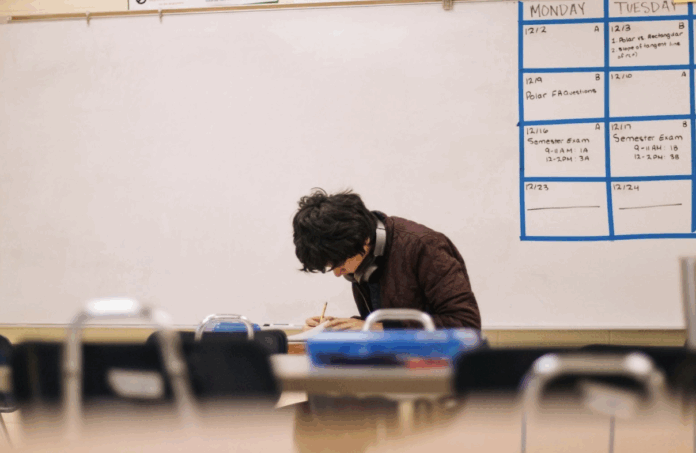If you’re relocating to New Zealand, raising children there, or simply curious about the education system in Aotearoa, you might have a few questions. Fortunately, New Zealand boasts one of the best education systems in the world.
Ranked 7th globally, the New Zealand education system offers free, high-quality public education. Education is compulsory for children aged 6 to 16, and public schools are well-funded. Here’s an overview of how the school system works and what studying in Aotearoa is like.
How Is the New Zealand Education System Different from Other Countries?
In contrast to many countries in the Northern Hemisphere, the New Zealand school year runs from early February until mid-December. Since New Zealand is in the Southern Hemisphere, the summer months are from December to February.
The school year is divided into two semesters, each with two terms lasting 10 weeks, followed by a two-week holiday. The school year ends in mid-December, with classes for the following year beginning in mid-February. Primary and secondary schools generally start earlier than universities, with many universities beginning in late February or early March.
Overview of the New Zealand Education System
New Zealand’s education system is structured into five stages:
1. Early Childhood Education (Ages 0-5)
Early childhood education isn’t mandatory, but most children attend kindergarten before turning five. Kindergartens are affordable, and parents can access subsidies for up to 20 hours of childcare per week. Children typically start with a half-day at kindergarten, gradually transitioning to full days from 9 am to 3 pm. Many children start at age 3 or 4.
2. Primary School (Ages 5-12)
Compulsory education starts at age 6, but most children begin school at age 5. The first year, known as “new entrance,” lasts a year or less, starting on their birthday and continuing to the end of the school year in December. Primary school years span from Year 1 to Year 8, usually covering ages 5 to 12. Some children may attend an intermediate school for Years 7 and 8 before moving to secondary school.
3. Intermediate School (Ages 12-13)
Intermediate schools serve as a transition between primary school and secondary school. They are becoming less common as many primary schools offer intermediate years or have merged with local intermediate schools. These schools prepare students for independence and larger environments in high school.
4. Secondary School (Ages 13-18)
Secondary school, or high school, spans Years 9 to 13. Education is compulsory until age 16 (Year 11). In the early years, students select elective subjects, but core subjects like English, Math, Science, and Physical Education remain mandatory. By Year 13, students have more freedom in subject choice, with no compulsory subjects beyond English. Classes typically run for one hour, and students study five subjects daily. Year 13 students often have one study period each day.
5. Tertiary Education (After High School)
Students wishing to continue their education beyond secondary school can attend universities or technical institutes. To enter university, students need a National Certificate of Educational Achievement (NCEA) Level 3 qualification, including credits in three approved subjects. Older students can apply for university admission through alternative routes or gateway programs.
New Zealand’s School Curriculum
The national curriculum in New Zealand focuses on teaching students the necessary values and skills to succeed. Each school has some flexibility in how it implements the curriculum, but the emphasis in primary school is on literacy, numeracy, and foundational subjects that prepare students for secondary school.
Language of Instruction in New Zealand
Most schools in New Zealand teach in English. However, there are Kura kaupapa Māori (Māori immersion schools) where classes are taught in te reo Māori, and the curriculum focuses on Māori culture and values. These schools follow Te Marautanga o Aotearoa, with at least half the classes taught in Māori.
Enrolling in School in New Zealand
Enrolment is done directly with the school you wish your child to attend. Many secondary schools have catchment zones, prioritizing students who live nearby. Students within the zone are guaranteed a place, but those outside may have to compete for remaining spots. Some schools extend their catchment zones to include rural areas.
How Do Children Get to School?
Most students walk, bike, or use private transportation to get to school. Many schools also offer buses for students living in rural areas, ensuring equal access to education for children outside urban centers.
Popular Classes in New Zealand
In primary school, the focus is on basic skills like reading, writing, and mathematics, along with subjects like art, music, social studies, and physical education. As students move to Years 7 and 8, they begin taking computer science, languages, art, and technology specialist classes. In secondary school, students can choose various subjects, including sciences, arts, languages, media studies, and technology.
Outdoor Education in New Zealand

Outdoor education is an integral part of New Zealand’s school experience. Upper primary and secondary school students attend school camps, which usually occur at the beginning or end of the school year. These camps help students build confidence, leadership, and resilience. Activities might include hiking, fishing, orienteering, and outdoor cooking.
Public and Private Schools in New Zealand
While most students attend public schools, New Zealand also offers private education. Public schools are free, but parents may still need to cover costs for uniforms, books, and extracurricular activities. Private schools are tuition-based and are not directly controlled by the government, but still receive some government funding. Additionally, state-integrated schools combine regular schooling with specific philosophies or religious education.
Qualifications in New Zealand
New Zealand students qualify through the National Certificate of Educational Achievement (NCEA). This system is divided into three levels, with students taking exams in Years 11-13. University Entrance requires students to achieve credits at Level 3 or higher in specific subjects, including reading, writing, and mathematics.
Tertiary Education in New Zealand
Tertiary education includes universities, polytechnics, and vocational training institutes. New Zealand has several universities that offer a wide range of programs, including the University of Auckland, the University of Otago, and Massey University. Polytechnics, which offer trade and vocational courses, are important to New Zealand’s education landscape.
Financing Tertiary Education
While New Zealand’s universities are publicly funded, students typically need to borrow money to cover tuition fees. The government offers student loans, and eligible students can receive allowances to help with living costs. Domestic students may qualify for the Fees Free program, which covers the cost of the first year of tertiary education. Some students, faced with the demands of their coursework, may opt to pay to write essays to manage their academic load more effectively. However, it’s important to use such services responsibly and ethically.
Conclusion
New Zealand offers a world-class education system, with free, accessible schooling and a wide range of opportunities for students to pursue higher education. Whether you’re moving to New Zealand or simply curious about the system, this guide provides a comprehensive overview of what you can expect.


